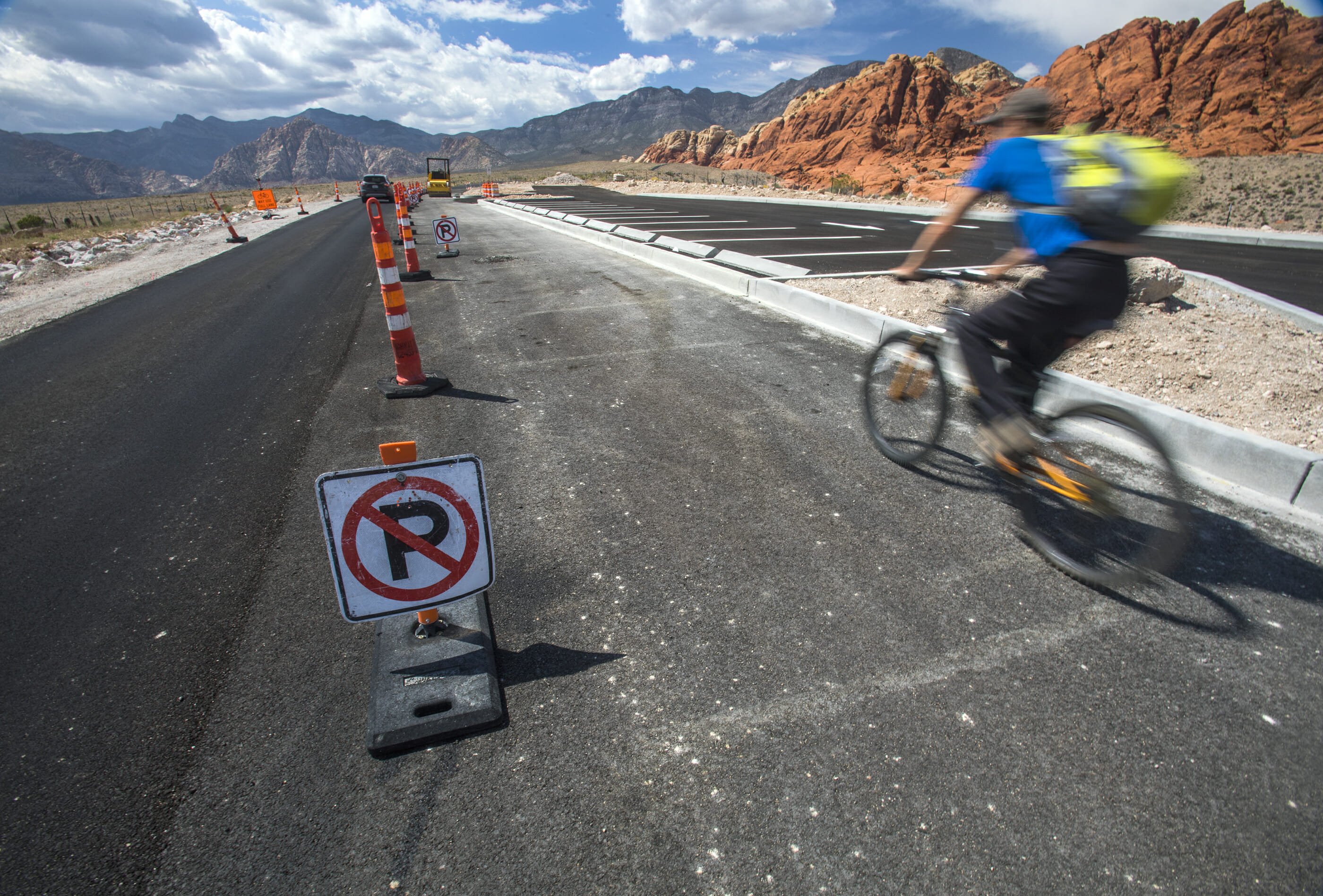Las Vegas doesn’t really want me to ride my bicycle

I am a bicycle commuter. I don’t mean I’m some guy who rides my bicycle once in a while through the Henderson suburbs or down a Summerlin bike trail. I don’t mean I occasionally ride my bicycle down to the store or I haul my bicycle in the back of my truck for an occasional ride after work. I mean I have made my bicycle my primary mode of transportation. Rain, dust storm or heat wave, I’m riding my bike. Whether the weather forecast says a hurricane is inbound or it's going to be 115 F, it doesn’t matter. I’ll be riding my bike.
I bicycle commute for multiple reasons. As a middle-aged man, cycling helps me maintain physical and mental fitness. I take pride in using an environmentally sustainable mode of transportation. I like feeling the sun and hearing the songs of birds while I pedal to work in the morning.
But I’m convinced this city doesn’t really want me riding my bike.
Let's start with the “cagers.” For those who don’t ride a bicycle or motorcycle, a cager is somebody sharing the road with you from inside the protective “cage” of a typical automobile. If they or another cager commits an error while operating their chosen mode of transportation, the cager has a solid metal encasement that’s equipped with an array of restraining belts and inflatable airbags to ensure they have the highest probability of surviving the accident.
This is in sharp contrast with the cyclist. The cyclist is an unprotected bag of brains, blood, bile and bone balanced precariously upon a thin aluminum frame and two skinny tires. One of the cyclist’s primary goals each day is to avoid almost certain death or dismemberment should one of the cagers commit an operational error at high speed while in close proximity to the cyclist.
Each day I bicycle commute, I come within inches of hundreds of cagers. These cagers weigh a ton or more and are often driving at speeds approaching 60 mph on surface streets. If these cagers see me at all, they greet me with anything ranging from indifference to overt hostility. I’ve been honked at and cussed at. I’ve had drivers purposely drive through water puddles to soak me. I’ve had drivers of diesel pickups “roll coal” on me, purposely accelerating in a manner that causes a cloud of diesel exhaust smoke to envelope and suffocate me. And, I’ve been run over … while riding down the sidewalk. To too many Las Vegans, I am either invisible or a nuisance, and the local government contributes to this mentality.
Our city lacks adequate bicycle lanes for commuting and automobile speed limits are too high for pedestrians and bicyclists. Over half of my daily commute lacks a bicycle lane, much of it along East Tropicana Avenue. In the absence of a bicycle lane, I am supposed to use automobile lanes.
Riding a bicycle through East Tropicana automobile traffic is an open death invitation. Even if everyone followed the posted 45 mph speed limit, impact with a vehicle traveling that speed would almost certainly be fatal. So, I choose the slightly less perilous sidewalk. Along the sidewalk I duck, dodge and weave, trying my best to avoid broken bottles that will shred my tires and the surprisingly frequent angry methamphetamine user who will swing their fists at me or attempt to push me off the sidewalk and into traffic.
But the biggest danger on the sidewalk is still automobiles. East Tropicana has a constant flow of traffic with almost no right turn pockets. A vehicle trying to exit East Tropicana has to do so quickly to avoid being rear-ended by the next vehicle. Drivers often make this maneuver without any awareness of a pedestrian or cyclist in the exit path. This creates a hazard for anyone on the sidewalk. Indeed, the only time I have been hit by a car, and too many near misses to count, has been this exact scenario.
Our local governments like to tout their bicycle lanes. But most of these bicycle lanes, trails and paths focus on recreational cycling in the suburbs or at the edge of town. Such paths rarely connect one’s home with their place of employment. Safe, efficient bicycle commuting is dependent on a network of connected bicycle routes through congested urban corridors, not pretty manicured bicycle paths in Summerlin or Henderson. Give us more bike lanes.
We also need to rethink vehicle speed limits. Organizations such as the National Association of City Transportation Officials and the National Highway Traffic Safety Administration have published countless studies connecting vehicle speed with pedestrian and cyclist deaths. The most common speed limit for cyclist deaths is 45 mph.
When you add poor street design and lack of speed limit enforcement, you’ve created a hostile, dangerous environment for cyclists. We need local government leaders to provide a safe environment for all commuters, regardless of the vehicle they choose.
Eric McCammond is a combat veteran who spent 24 years in the U.S. Air Force. He is currently an aviation operations safety administrator.
